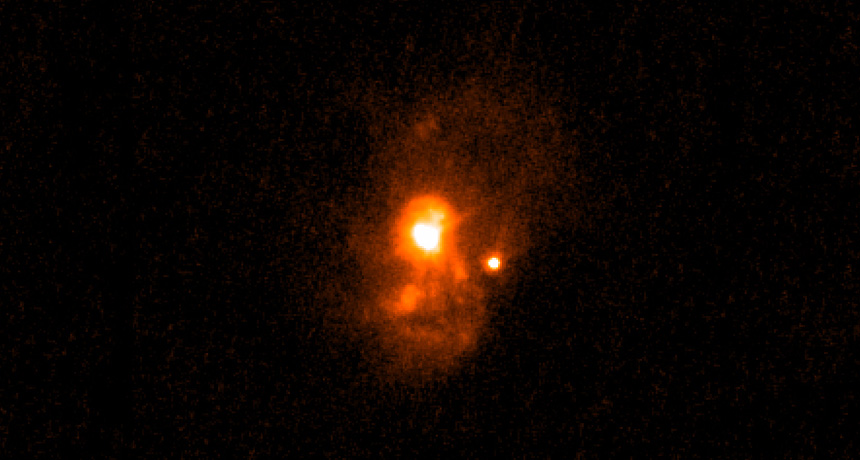
RADIANT GLOW Ultraviolet light (orange) pours out of a galaxy in this image from NASA’s GALEX satellite. New Hubble observations reveal this galaxy might mimic the earliest galaxies in the universe.
NASA; ESA; R. Overzier/ON/MCT; T. Heckman/JHU

RADIANT GLOW Ultraviolet light (orange) pours out of a galaxy in this image from NASA’s GALEX satellite. New Hubble observations reveal this galaxy might mimic the earliest galaxies in the universe.
NASA; ESA; R. Overzier/ON/MCT; T. Heckman/JHU